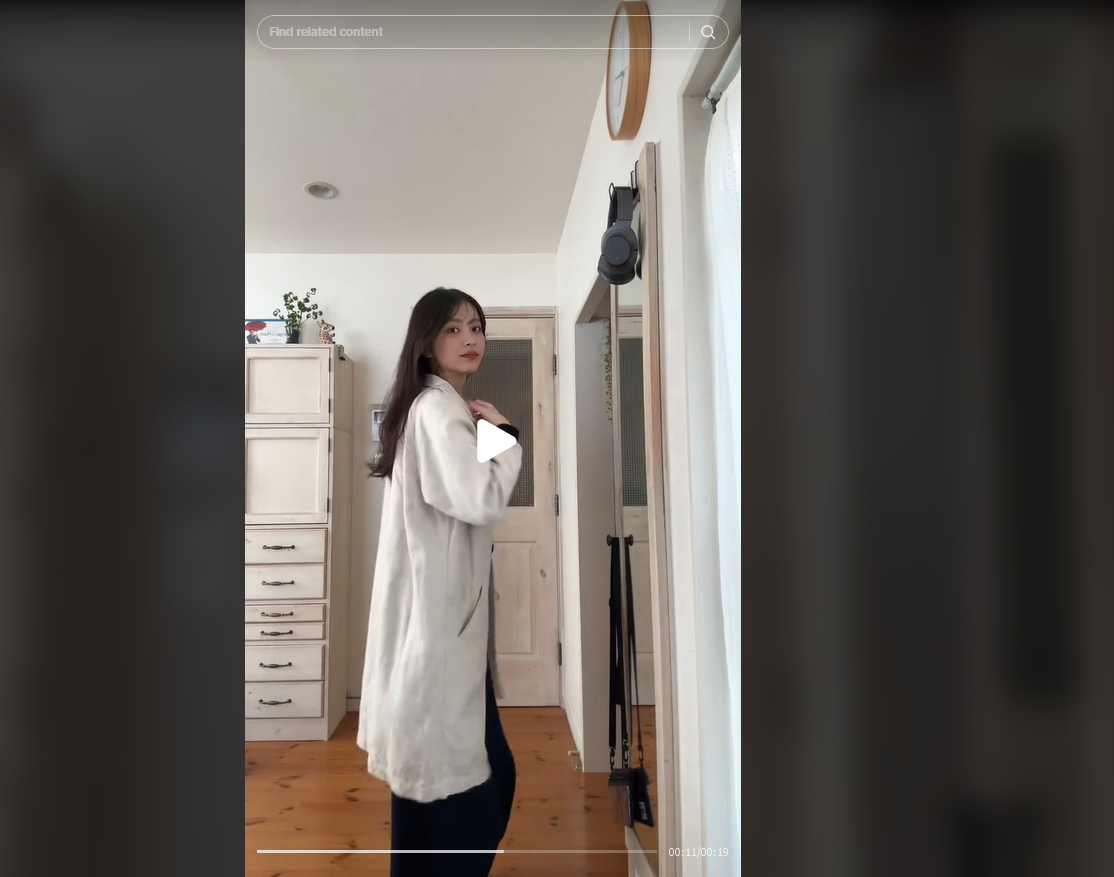Understanding Fashion Branding
The fashion industry is one of the most challenging spaces to maneuver. After all, it is a highly profitable space worth $369 billion in the US, proving how competitive it can be.
If you are new to fashion branding or need a little oomph to your strategy, this article is for you. Read on as we dig into the foundation of fashion branding and techniques you can implement. Collaborating with a brand identity firm early on ensures your fashion brand has a strong, recognizable identity from the start.
What is Fashion Branding?
Fashion branding establishes a unique identity for your fashion business in the market. It entails a mix of eye-catching visual identity that embodies your brand, strategic product management, and an overall positive brand experience that sets you apart from your competitors.
Clothes have evolved as a way of self-expression. Our choices give a glimpse into our personality, lifestyle, and individuality. They are also primarily emotional purchases.
Emotional connection is essential to every brand's ability to build customer relationships. A strong emotional bond with your customers can help you convey your message effectively.
Keep in mind that perception is everything in fashion branding, too. Take luxury fashion brands Chanel, Louis Vuitton, and Dior. They are highly regarded as fashion authorities in the industry, which resulted in unbreakable trust and loyalty that transcends generations. Together, they create iconic fashion brand identities many look up to.
The Importance of Creating a Fashion Brand Identity
What you wear reveals so much about a person—their lifestyle and sense of taste in fashion, among other things. Your fashion brand identity is a powerful representation of unique traits, values, and beliefs your customers resonate with. When customers wear what you make, it can influence how people perceive you.
Consider your logo, typography, images, and illustrations when establishing your fashion brand identity. Also, take time to shape your personality, tone, and voice.
With a strong fashion brand, you can command attention from your desired audience, differentiate your business from competitors, and establish credibility. It also inspires a community of loyal followers and entices customers to take action.
To summarize, it is vital to have a strong fashion brand for the following reasons:
- Improved brand awareness and recognition
- Increased brand trust
- Higher customer retention
- Increased conversion rate
- Positive brand image
So, how do you create a fashion brand identity that ticks all the boxes?
A Guide to Creating a Powerful Fashion Brand
Learn how to launch an influential and memorable fashion brand by integrating the following steps.
1. Visualize and Develop a Strategic Plan
Having a carefully curated strategic plan can spell success for your fashion brand. Think of it as a roadmap that merges insights from your fashion brand manager, marketing team, and other stakeholders.
A branding plan should outline your vision, mission, positioning strategies, visual design, and touchpoints. It should also be backed up with in-depth fashion industry research and include actionable plans.
2. Define Brand Values and Mission
Values pertain to beliefs and traits you want your brand to embody. These are what drive and motivate your company in everything it does. They also attract lifelong customers with shared values. Examples of core values include sustainability, integrity, responsibility, and empathy.
A brand mission is your overall long-term goal, serving as your guide in every fashion branding decision. Take fashion icon Ralph Lauren, guided by the mission of "inspiring the dream of a better life through authenticity and timeless style."

Ralph Lauren commits to providing authentic and timeless style through its products. Image via Unsplash
When identifying your brand values and mission, assessing what matters most to your business is crucial. These are fashion branding pillars as you navigate and establish your market placement.
3. Audit Your Competitors
The fashion industry is a competitive field that is not for the faint-hearted. Knowledge about your competitors can significantly impact your brand's success.
Your first step is conducting a competitive analysis. This thorough process gathers information about what customers love about other fashion brands. It unearths opportunities to develop your business.
Check your competitors' social media pages, visit their e-commerce sites, and read what people say about them. You can even try their products and assess the materials used, product design, and pricing.
With this knowledge, you can better understand where and how to thrive in the market. It also helps define your unique selling proposition (USP).
When you are clear on your USP, it is easier to strategize a game plan that leverages your strengths. The USP also enhances a more distinct fashion brand identity.
4. Know Your Target Audience
Knowing who you're talking to ensures you create cohesive fashion branding and marketing campaigns. It lets you personalize your messaging and content that attracts and connects with them. Fashion brands that know their target audience also produce products that offer solutions to unique problems.
When customers feel understood and think you add value to their lives, they are more likely to support you and offer feedback and suggestions vital to your growth.
So, how can you learn about your audience?
You can start with a questionnaire that zeros in on their lifestyle, preferences, needs, and wants. You can also open forums online or connect with them through social media to learn about their favorite fashion brands.
Integrate a feedback section on your digital platforms that they can easily access. Or better yet, talk to them in person through your sales and customer service teams. Having an open dialogue where customers feel safe to express what they think can help improve the overall brand experience.
5. Develop a Product Line
A product line is a selection of carefully curated products under a single brand. For example, Nike has several product lines under footwear, sports apparel, and other accessories. Many fashion brands also categorize product lines according to season: winter, spring, summer, and fall.

Nike has several product lines catering to different segments. Image via Nike
Product line development involves design, prototypes, material sourcing, and finding a reliable production or manufacturing company. It requires careful planning by designers and other fashion professionals to create dynamic and innovative products that customers will love.
A good product line is designed for a specific audience and solves specific problems. It should highlight features that make you stand out from competitors and conjure emotions, like confidence and happiness, from those who wear your apparel and accessories.
6. Craft Your Visual Identity
Visual identity is a vital element of fashion branding. With an impressionable visual presentation, you will surely be the talk of the town.
With this in mind, align your visual identity with your brand essence—design according to the values you uphold and the people you cater to. Reflect your brand personality in every asset, and use your set tone and voice when communicating. A cohesive visual identity is critical to increasing brand awareness and recognition.
When your target audience can relate you to specific visual elements like colors, logos, and product design, they can easily recall your brand. Think Louis Vuitton's monogram LV logo.

Louis Vuitton is recognized for its iconic monogram. Image via Louis Vuitton
7. Build Presence on Social Media
In this digital era, does your brand exist if you're off social media?
Nowadays, customers look through social media platforms like Instagram and TikTok over magazines for fashion inspiration. It's easy to get on new trends and follow their favorite celebrities online.
So, invest in social media marketing to build a strong brand, grow your reach, increase engagement, and convert your followers into buying customers. Social media is also a great way to make a community of loyal customers and gain insightful feedback.
Moreover, you can create shoppable images and video content that make your brand accessible and memorable.
8. Invest in Engaging Videos
Video marketing is hot for a good reason. It's the most accessible form of content to absorb information, as it is more engaging than text-only content or an image. This is especially true as attention spans have decreased over the past few years. You can use it to tell stories, educate, and entertain your audience in less than a minute.
Videos are also great if you want to make your content more interactive. You can ask social media followers to post reels and create video responses to challenges on TikTok, Instagram, and Facebook, among others. From OOTDs (Outfit of the Day), social media users prefer uploading GRWM (Get Ready with Me) videos for fit check content.

Get Ready With Me Fit Check via TikTok
9. Strive to Stay Relevant
It's easier to trust a brand everyone knows. But there's more to staying relevant than knowing this season's favorite style. Regarding fashion branding, people are keen to support those who are socially aware and active in their causes.
This means fashion brands that authentically solve social dilemmas other than posting on social media are loved more. In the fashion world, diversity and inclusivity have been long-standing issues. Now, we see more representation of women of all sizes, colors, and shapes.
Fashion companies that violate ethical practices are also under scrutiny, and luxury brands are not immune to this. There's a growing demand for sustainable fashion goods that use eco-friendly materials and manufacturers that follow humane labor practices.
Again, this goes back to aligning your actions and decisions as a fashion brand to your values and mission.
10. Monitor and Track Results
Fashion branding evolves. You must adapt as market demands and trends change and new technologies arise. That said, monitoring and tracking the success of your fashion branding and marketing campaigns is crucial. Work with your team to run tests regularly, measure results, and gather insights.
Adjust your KPIs according to market conditions, too. Feel free to experiment with new content, e-commerce trends, web design, etc., and make the necessary changes to further your fashion brand.
Fashion Branding Trends Plus Examples
Here are some trends-making waves you can use to create a strong identity.
Integrate Storytelling in Your Content
Connect with your customers personally by weaving storytelling into your content. For example, why not go through the creative process of how you came up with a product line when launching your latest designs? You can also give a glimpse of your brand's origin shared by your team or the business owner.
Storytelling adds an interesting spin and human touch to your content. It makes you feel human. In effect, your target audience is more receptive to your brand message.
A good example is 93 Play Street, a swimwear brand launched by TikTok influencer Jessica Anderson. The company caters to women, featuring trendy all-inclusive pieces. The brand went viral over its TikTok video explaining why 93 Play Street exists.
Anderson addressed the market's lack of options and variety, especially for high-waisted bathing suits. The video garnered over six million views and boosted their sales. In another video, Anderson showed her creative process, taking her followers behind the scenes.

93 Play Street weaves storytelling in its video content. Via TikTok

Anderson explains the creative process of designing her swimsuits. Via TikTok
Collaborate with Influencers
Today's customers value authentic reviews and feedback from people they trust and follow online. Enter influencer marketing.
Because of the weight of their impact on customers' decision-making, more and more businesses are partnering with influencers. And you should, too, if you want to take your brand to new heights.
Pura Vida, a jewelry brand, launched a program for potential brand ambassadors. They collaborate with influencers who buy their products, regardless of their following size. Such a decision ensures they only partner with people who love what they sell.

Influencer Carolina Reyes proudly wearing Pura Vida. Image via Instagram
When selecting influencers, choosing someone who shares your brand's values and represents the people you are talking to is crucial. This ensures authenticity, which increases brand trust.
Leverage Social Media
Social media can be a powerful visual tool for fashion brands. Its broad reach is perfect for boosting awareness, whether running a sale, launching a product line, or announcing fashion shows.
These platforms have integrated multiple business tools to transform your page from a video and image content-sharing platform into a shopping space. It has also become a town hall where users voice their opinions about good and bad fashion brands. These integrations make social media great for achieving multiple goals.
Fashion brand Kate Spade New York plays with colors and creative content on Instagram. The brand posts videos and images of its products captured in the corners of the Big Apple. It also features behind-the-scenes, offering an insider look at how the brand designs its products. Instagram serves as its lookbook for fashion inspiration. It also educates and allows the brand to foster meaningful connections with its followers.

Kate Spade New York creates a distinct IG feed. Image via Instagram
Use AI for a Personalized Brand Experience
Physical stores no longer limit fashion brands. Now, you can bring the store to your customers through digital means. AI or artificial intelligence is a great way to improve their shopping experience and make your brand stand out.
Rihanna's fashion brand Savage X Fenty collaborated with Fit: Match as it introduced AI-powered body shape technology. It works by asking shoppers to have their bodies scanned in-store. After which, it suggests Savage X products that best fit your body.
Rihanna shares, "Having the "Fit Xperience" is one of those things that makes it important because people don't even know their size, and we are shopping online. You're guessing and buying sizes you think would work best."

AI-powered body scanner Fit Xperience via Trend Hunter
There are many ways to revolutionize your business, but strategic fashion branding will put you on the map. Learn more about fashion branding with a trusted brand identity agency like Ramotion. Would you be willing to take the next step with us?
Oct 10, 2024
